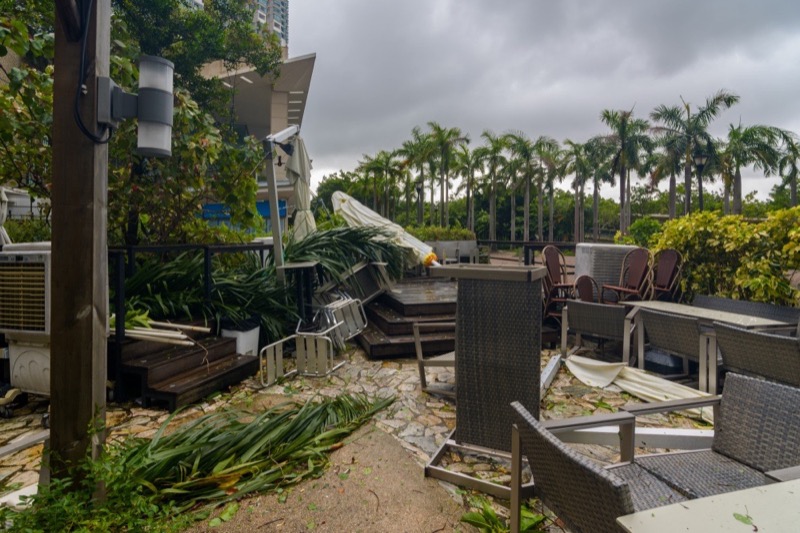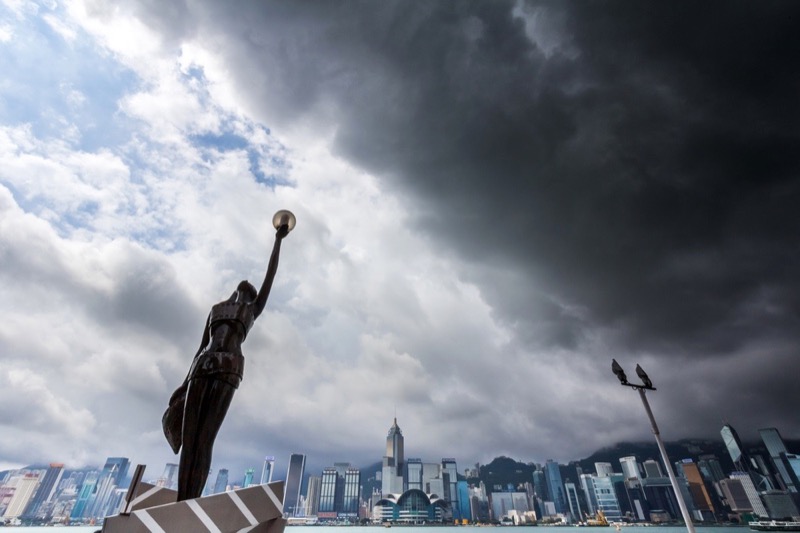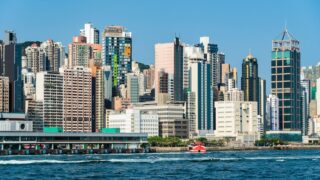Typhoon season in Hong Kong typically runs from May to early November. The peak period lasts from July to September. According to the Hong Kong Observatory, typhoon season can see multiple systems affect the city. The good news? To help you navigate safely through this period, Hong Kong has a warning system in place. Find out more about it here – plus, read about some of the city’s biggest typhoons on record!
What exactly is a typhoon, and how is it different from a hurricane?
Despite much confusion, they’re actually the same weather phenomena. Both are tropical cyclones – a rotating, organised system of clouds and thunderstorms. They mainly differ in the locations they’re formed or appear in. A system that forms over the Northwest Pacific is called a “typhoon”, while one that forms over the Atlantic is referred to as a “hurricane”.
The phenomenon occurs when air rises due to warm sea water, creating a rotating cycle as the air heats and cools above the surface. This results in the strong winds, heavy rains, and even floods typically associated with the cyclones. When winds hit a maximum sustained speed of 118km/h near the centre of the system, it’s officially categorised as a typhoon. At speeds of 185km/h or more, it becomes known as a super typhoon.
Hong Kong’s Typhoon Warning System
Signal No.1 (or T1)
Indicates a tropical cyclone whose centre is about 800km from Hong Kong, and which may affect the territory. People are advised to stay alert and keep updated through regular announcements.
Signal No.3 (T3)
Expect strong winds (41 to 62km/h) blowing generally towards Hong Kong near sea level, with gusts potentially exceeding 110km/h. Public transport still runs but harbour cruises, flights, stores and business might close or be cancelled. Secure loose objects (for example, on balconies) and stay away from the shoreline.
Also, kindergartens close in a T3, so check the EDB site for the most up-to-date information. You should also be familiar with your school’s adverse weather arrangements – they all follow government guidelines, yet some will have specific instructions or requirements.
Signal No.8 (T8)
Expect stronger winds, up to 102km/h, and gusts up to 180km/h or more. Everything shuts down. Before a signal 8 is issued, plenty of advance warning is given. This gives the public a chance to return home or go to a safe place. (MTR frequency rises to peak-hour levels at this time.) Take precautionary measures before the gale begins. (So, lock windows and doors, and fix adhesive tape to large, exposed window panes to reduce damage by broken glass).
Tropical cyclone Lionrock, which affected Hong Kong in October 2021, set a new record for being the longest hoisted T8 typhoon signal in HK. The signal started on Saturday morning and wasn’t downgraded until Sunday morning, as it began to weaken into a depression. The 22-hour signal broke the record of 21.5 hours set in 1978 by Agnes.
Signal No.9 (T9)
Winds increase above 102km/h, and can be significantly stronger. Stay indoors and away from exposed windows or doors to avoid flying debris. Don’t touch any electrical cables that may have been blown loose.
Signal No.10 (T10)
Expect sustained wind speeds from above 118km/h, with gusts that may exceed 220km/h. The same precautions as above apply, and you’re advised to stay alert even in a temporary calm as the centre of the typhoon passes over Hong Kong.
Also…
It’s a great idea to download the Hong Kong Observatory app, MyObservatory, to get updates about weather in Hong Kong, including typhoons. Turn your alerts on so you’re always up to date!

Major Typhoons
To explain what a big deal a T10 is, there have only been sixteen T10 typhoons in Hong Kong since 1946. Often, these leave huge trails of destruction. Take a look below for details of some of Hong Kong’s worst typhoons.
Typhoon Saola
The maximum sustained wind near the centre of 2023’s Saola was 210km/h, breaking the previous record of 205 set by Super Typhoon Hope in 1979, and setting the highest record since records began in 1946. During the passage of Saola, the overall wind strength in Hong Kong was similar to that of Hato in 2017, but relatively weaker than that of Mangkhut in 2018.
Typhoon Mangkhut
Mangkhut struck Hong Kong in September 2018; it was a T10 system and dubbed a super typhoon. The T10 signal remained active for 10 hours, and the damage to the city was serious and extensive. (You can see some images of the damage here.) Injuries were reported to be five times higher than Typhoon Hato from the previous year.
Typhoon Hato
This T10 typhoon hit the city in August 2017. There was at least 129 injuries, over 5,300 reports of fallen trees, and more than 480 cancelled flights. “Hato” momentarily gained super typhoon intensity over the sea areas south of Hong Kong, reaching an estimated speed of 185km/h near its centre.
Typhoon Vincente
While Typhoon Vincente didn’t result in any casualties back in 2012, it still caused damage: 138 injuries, 8,800 felled trees and numerous landscape damages. Hundreds of commuters were forced to stay overnight in trains or at MTR stations due to toppled trees and fallen scaffolding.
Typhoon York
Ranking highest in terms of injuries sustained (500 people), Typhoon York (1999) also held the record at the time for the longest duration in which the T10 signal was in place. During its passage, a maximum hourly wind of 151km/h was recorded at Waglan (one of the Po Toi islands), over 4,000 trees were uprooted, and 90 roads were rendered impassable.
Typhoon Ellen
This slow-moving cyclone struck in 1983, with the T10 signal being hoisted for a total of eight hours, and hurricane-force winds lasting for five hours at Cheng Chau. During its run, 10 people were killed, 12 went missing and 333 were injured. Wind gusts at Cheng Chau reached 237km/h – the strongest in that location since 1953.
Typhoon Hope
Despite its positive sounding name, Typhoon Hope (1979) resulted in 12 deaths and 260 injuries, while around 2000 people were forced to stay in temporary shelters due to the damage. At the Star Ferry pier, wind speeds reached 200km/h. This was the highest gust recorded inside the harbour since Typhoon Rose.
Typhoon Rose
In August 1971, Typhoon Rose tore through Hong Kong and left 110 dead, five missing and 286 injured in its wake. An unusual fog was also observed at Waglan Island, a rarity in Hong Kong in August. Rose was the most severe typhoon for fatalities and heavy damage since Wanda in 1962.
Typhoon Wanda
Arguably Hong Kong’s most intense cyclone. This 1962 typhoon claimed 130 lives and left 53 missing and at least 72,000 people homeless. The hourly wind speed of 126km/h was the second highest on record at the time, with speeds even averaging about 144km/h for a short period.
For weather updates and typhoon information, go to the Hong Kong Observatory website.
Get more handy tips and hacks in our Living in Hong Kong section!






